
Human Serum in Cell Culture
Everything you need to know
Human Serum Type AB, also known as Human AB Serum, may be described as blood plasma, where all cells and clotting factors, such as fibrinogen have been removed. It does not contain any white/red blood cells or platelets. All proteins that are not used for clotting, as well as antibodies, antigens, hormones, and electrolytes are preserved during the filtration process.
In cell culture, Human serum is used to provide your cells with a physiology that more closely resembles the natural state, when compared to other sera, such as Fetal Bovine Serum (FBS). Therefore, human sera may be superior to animal sera when culturing sensitive human cell lines, such as macrophages or lymphocytes. Further, it is used in control assays, immunoassays, clinical chemistry, and in vitro diagnostics. Our Human Serum is obtained exclusively from healthy male donors in FDA-licensed facilities located in the USA.
FDA-APPROVED
Our Human Serum is obtained exclusively from FDA-licensed facilities in the USA.
HUMAN PHYSIOLOGY
Optimal for studies with sensitive human cell lines.
VIRUS TESTING
Capricorn's Human Serum is tested for all viral markers using FDA-approved methods.
Quick Links
What is Human Serum?
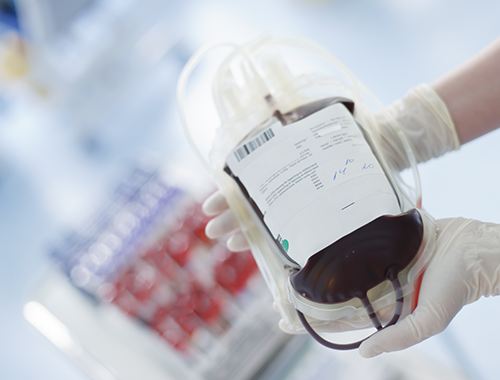
Human Serum, Type AB
As the name already suggests, Human Serum is obtained from healthy male blood donors. In principle, it could be described as blood plasma, in which all cells and clotting factors (e.g., fibrinogen) have been removed. To maintain the growth promoting characteristics of serum, all proteins that do not partake in the clotting process, as well as antibodies, antigens, hormones, and electrolytes are preserved during the filtration process.
Serum obtained from blood group AB-donors is particularly beneficial, as it does not contain any anti-A or anti-B antibodies, which could trigger an unwanted immune response. This is of particular interest in cell therapy research.
Why use Human Serum in Cell Culture?
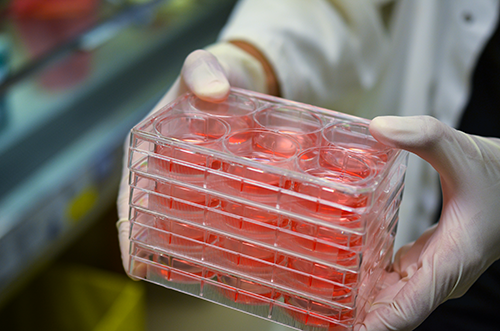
In cell culture, human serum is of utmost importance for research of the human organism. It allows scientists to cultivate human cell lines, test novel drugs, and gain a deeper understanding of the immune system.
Human Serum is used for various applications, such as:
- Cultivation of sensitive human cell types
- Drug testing & clinical chemistry
- Cell therapy studies & immunoassays
- HLA tissue typing & in vitro diagnostics
- And many more
Human Serum vs. Fetal Bovine Serum (FBS)
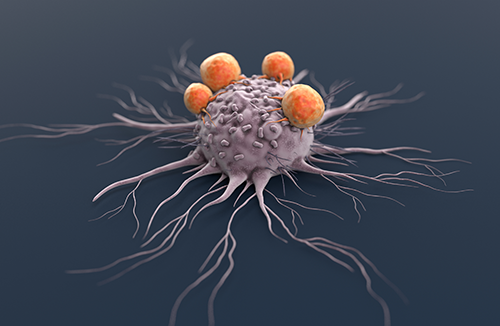
What is the difference between Human Serum and Fetal Bovine Serum (FBS)?
Many of the above-mentioned applications are important key players in medicine. Therefore, it is crucial that immunogenicity, introduced by a foreign species, is avoided. In other words: Animal-derived components (e.g., the proteins and growth factors in animal serum) could provoke an immune response within human cells. Human Serum is xeno-free, meaning that it contains no components of a foreign species.
Hence, human serum is considered to be superior to animal serum when culturing human cell lines, especially immune cells – such as macrophages or lymphocytes – or in any other application, where immunogenicity could be an issue. Scientists often use human serum as supplement to cell culture media.
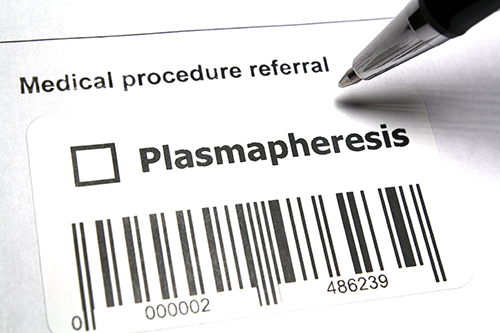
How is Human Serum obtained?
Traditionally, blood was drawn from healthy human donors and the blood cells were separated from the plasma by centrifugation, which was further processed into serum.
Capricorn’s Human Serum, like most Human Sera nowadays, is obtained by plasmapheresis. It is a procedure similar to dialysis, where whole blood is separated into cellular components and plasma by a medical device. The plasma is collected and replaced by a colloid fluid, e.g., saline, which gets recombined with the blood cells and reintroduced into the donor’s blood stream.
The role of Human Serum Albumin
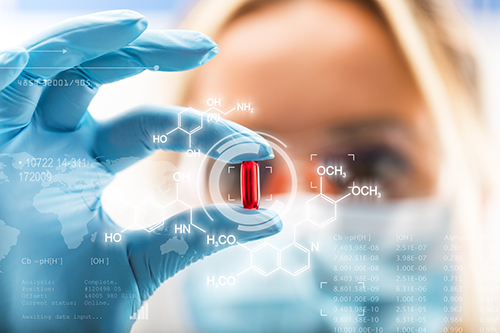
Within the human bloodstream, important molecules, such as lipids, hormones, vitamins, minerals, and waste products are transported by blood proteins. Often, these are also referred to as plasma proteins and include, e.g., albumins, lipoproteins, glycoproteins, and α, β‚ and γ globulins – of which albumin (human albumin) is the most prevalent.
In modern drug development, researchers make use of the serum’s binding capacity to deliver the drug to the desired site of action. The drug is transported by plasma proteins and circulates through the bloodstream.
Frequently Asked Questions (FAQ)
Do you offer any treatments for your Human Serum?


Yes, we do. We offer heat-inactivated Human Serum and other treatments upon request.
Please contact us on this matter – we are happy to help!
Should I heat-inactivate my Human Serum?


It used to be common practice to heat-inactivate various serum products and in fact, many protocols still do call to do so.
In general, we do not recommend heat-inactivation unless you are entirely sure as to why you are doing this! Most cells do not require heat-inactivated serum to grow. Please examine your experimental setup, whether this procedure is really necessary for your cells.
What is the difference between Human Serum and Fetal Bovine Serum (FBS)?


As mentioned above, Human Serum resembles the physiological environment of the human organism more closely than, e.g. FBS.
Therefore, when working with sensitive human cell lines, such as macrophages or lymphocytes, it is recommended to use Human Serum instead of animal serum. Animal serum may provoke an unwanted immune response that could alter the results of your experiments.
At which concentration should I supplement my growth medium with Human Serum?


To answer this question, you will have to experimentally determine the right concentration of serum for your cells.
Most scientists supplement their growth media with a serum concentration between 5–20 %.
How is your Human Serum shipped? What are the shipping conditions?


Your Human Serum will be shipped in a frozen state on dry ice.
Should have any further questions on this matter, please do not hesitate to contact us – we will be happy to assist you.
The delivery took longer than expected and my serum arrived slightly thawed. Is it still OK to use?


Unfortunately, we cannot control all aspects of delivery, such as delays of the courier, and on rare occasion your serum may arrive slightly thawed. This is nothing you need to worry about.
Should this happen, please thaw the serum completely, swirl gently to homogenize and refreeze for further use. Any precipitation you may see is not toxic and will not affect the performance of your serum.
My Human Serum has precipitation. Is it still OK to use?


Precipitation of serum products while thawing is very common and nothing you need to worry about. In fact, even when thawing the serum correctly, small amounts of precipitation may occur. This is due to salt and protein gradients that form crystalline/flocculant structures.
In order to avoid precipitation, you may follow these steps:
- Take your serum out of the freezer and allow acclimatizing at RT for 10 min
- Place into a 37 °C water bath (do not exceed 37 °C)
- Swirl gently every 15 min
We do not recommend filtration of precipitates, as this may remove valuable nutrients from the serum.
Why is your Human Serum only from male donors?


This question is best answered by looking at a fundamental process during pregnancy: the immune system's response to foreign cells.
Generally speaking, all healthy cells carry small peptides as an "identity card" on their surface - the major histocompatibility complex (MHC). If the MHC contains a "self"-peptide (a signal for "self"-identification), the immune system does not answer with an immune response. It is the same mechanism by which, e.g., a virus or foreign tissue triggers a response.
Now, during pregnancy, the immune system of the mother could produce antibodies against the MHC peptides of both the father and the fetus. To avoid rejection, the fetus in turn does not produce many of these classical MHC peptides. Instead, it produces non-classical MHC proteins that regulate maternal NK (natural killer) cells.
Yet, the mother's antibodies would still be present even after pregnancy and lead to complications in the further use of human serum. This is why human serum from male donors is far more common than from female donors.
Instructions for Use
How to thaw your Human Serum product


You can thaw your Human Serum overnight at +2 °C to +8 °C. Swirl gently to homogenize.
Should you experience precipitation when thawing your serum, this can be avoided by the following procedure:
- Allow your serum to acclimate to RT for 10 minutes
- Pre-heat your water bath to 37 °C (not higher)
- Place bottle(s) into water bath until thawed while gently swirling the bottle(s) every 15 minutes
Cryoprecipitation occurs due to salt and protein gradients, which can lead to formation of crystalline or flocculant structures. Please note that these precipitates are not toxic and do not affect the performance of your serum. In fact, small amounts of cryoprecipitation is considered normal.
Handling your serum: good practices


The following guidelines will help to ensure the integrity of your serum product:
- Avoid repeated freeze/thaw cycles
Freezing and thawing can destroy various nutrients within the serum, and formation of insoluble precipitants may occur.
- Store your serum ≤ -15 °C, protected from light
A temperature-stable freezer is the optimal storage place for serum products. We do not recommend -80 °C freezers, as the temperature may damage the material of the bottle.
- Aliquot your serum if you don't intend to use the whole bottle after thawing
As mentioned above, you should avoid repeated freeze/thaw cycles. Consider aliquoting the remaining part of the bottle into practical volumes for later use (e.g. the volume you would add to a 500 ml bottle of medium).
- Store your serum at +2 °C to +8 °C if you will use it within 4–6 weeks
Once again, to avoid repeated freeze/thaw cycles, you can store the serum in the refrigerator, should you plan to use the entire bottle within the next 4–6 weeks.
How to adapt your cells from Fetal Bovine Serum (FBS) to Human Serum


If you have been previously supplementing the growth medium for your cells with FBS and would now like to switch to Human Serum, we recommend the following:
- For the first 3–5 days, supplement your growth medium with a 1:1 mix of Human Serum and FBS (using the same total volume of serum as before)
- Keep an eye on the morphology and viability of your cells
- Once they have adapted, you may switch entirely to Human Serum
Buy our Human Serum
Human Serum, Type AB
YOUR BENEFITS AT A GLANCE
- Healthy male blood donors (blood group AB)
- Collected from FDA-licensed facilities in the US
- Heat inactivation available upon request
- .1 µm sterile-filtered
- Tested for mycoplasma, endotoxin, and sterility
- Full FDA viral testing
- Tested for numerous viral markers (e.g., HIV-1, HAV/HBV/HCV, Parvovirus B19, and many more)
- does not contain any anti-A or anti-B antibodies
VARIOUS APPLICATIONS
- Any application where you want to avoid immunogenicity
- Ideal for culturing human-derived cell lines
- Cell therapy studies & immunoassays
- Drug testing & clinical chemistry
- HLA tissue typing & in vitro diagnostics
- And many more
PRODUCT SPECIFICATIONS
| Appearance | Clear amber liquid |
|---|---|
| Storage and shelf life | (long term, ≤ -15 °C) (Once opened, store at +2 to +8 °C. Use within 4–6 weeks.) Avoid repeated freeze-thaw cycles. Preparation of aliquots recommended. |
| Shipping conditions | (dry ice) |
| Thawing | Overnight at +2°C to +8 °C. Swirl gently to homogenize. |
| Origin | FDA-licensed facilities, USA |